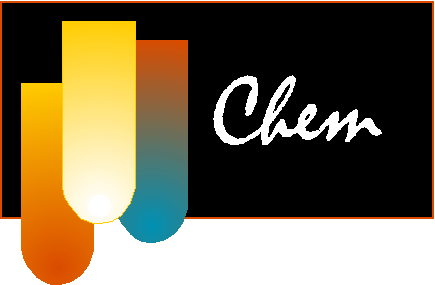 | Sample Lab Questions Investigation #21:
"Some Commercial Antacids"
|
 Click HERE for an overview of Investigation 21, compliments of Mr. Alex Redd.
Click HERE for an overview of Investigation 21, compliments of Mr. Alex Redd.
These questions have been taken from lab quizzes given in previous years.
Some of the answers are listed at the end.
Note: The subscripts and superscripts may not appear as such. It depends upon your web browser.
- 1.
- (1pt) In general, when preparing dilute acid solutions do you add acid to water or water to acid?
- 2.
- (3pts) Write the formula unit and net ionic equations for the reaction that occurs in a hyperacidic stomach when an antacid with CaCO3 as its active ingredient is taken.
- 3.
- a. (2pts) What compound do we use in this investigation to standardize the NaOH (give name and formula)?
- b. (1pt) Why do we need to do this standardization of NaOH solution?
- 4.
- a. (2pts) What is the molarity of a NaOH solution if 32.47 mL is required to titrate 0.6013 g of potassium hudrogen phthalate (C8H5O4K)?
- b. (1pt) Using the above NaOH solution, an HCl solution was standardized. If 35.62 mL of NaOH was required to neutralize 31.23 mL of the HCl, what is the molarity of the HCl solution?
- 5.
- a. (2pts) Write the formula unit and the net-ionic equations to describe the reaction between potassium hydrogen phthalate (KHP) and cesium hydroxide. Use C8H5O4K as the formula for potassium hydrogen phthalate, C8H5O4- to represent the hydrogen phthalate ion and so forth.
- 6.
- a. (2pts) Explain briefly the process by which the acid-neutralizing capacity of the antacid was determined in this investigation.
- b. (1pt) What are the units of the "acid-neutralizing capacity"?
- 7.
- An antacid tablet weighed 1.5002 g. A 0.2512 g piece of it was dissolved in 35.25 mL of 0.1008 M HCl and then the excess HCl was titrated to the equivalence point with 10.25 mL of 0.1212 M NaOH.
- a. (3pts) Calculate the acid-neutralizing capacity of this antacid.
- b. (1pt) How many moles of HCl would have been consumed by the entire tablet?
- c. (1pt) What indicator was used for this neutralization titration and what was the color change when the equivalence point was reached?
Answers
| 2. | | formula unit: CaCO3(s) + 2HCl(aq)  CaCl2(aq) + H2O(l) + CO2(g) CaCl2(aq) + H2O(l) + CO2(g) |
| | net ionic: CaCO3(s) + 2H+(aq)  Ca2+(aq) + H2O(l) + CO2(g) Ca2+(aq) + H2O(l) + CO2(g) |
| 4. | a. | 0.09068 M NaOH |
| b. | 0.1034 M HCl |
| 5. | | formula unit: C8H5O4K(aq) + CsOH(aq)  C8H4O4CsK(aq) + H2O(l) C8H4O4CsK(aq) + H2O(l) |
| | net ionic: C8H5O4-(aq) + OH-(aq)  C8H4O42-(aq) + H2O(l) C8H4O42-(aq) + H2O(l) |
| 7. | a. | 0.009199 mol HCl/g |
| b. | 0.01380 mol HCl/tablet |

 To report any corrections, please e-mail Dr. Wendy Keeney-Kennicutt.
To report any corrections, please e-mail Dr. Wendy Keeney-Kennicutt.


 Click HERE for an overview of Investigation 21, compliments of Mr. Alex Redd.
Click HERE for an overview of Investigation 21, compliments of Mr. Alex Redd. CaCl2(aq) + H2O(l) + CO2(g)
CaCl2(aq) + H2O(l) + CO2(g) Ca2+(aq) + H2O(l) + CO2(g)
Ca2+(aq) + H2O(l) + CO2(g) C8H4O4CsK(aq) + H2O(l)
C8H4O4CsK(aq) + H2O(l) C8H4O42-(aq) + H2O(l)
C8H4O42-(aq) + H2O(l)
 To report any corrections, please e-mail Dr. Wendy Keeney-Kennicutt.
To report any corrections, please e-mail Dr. Wendy Keeney-Kennicutt.